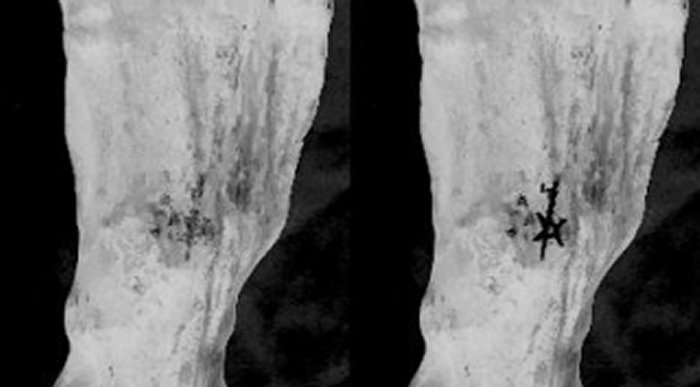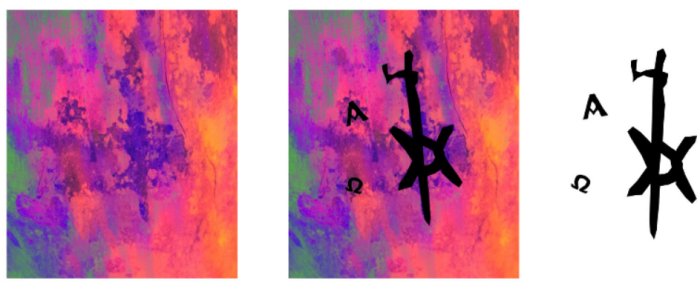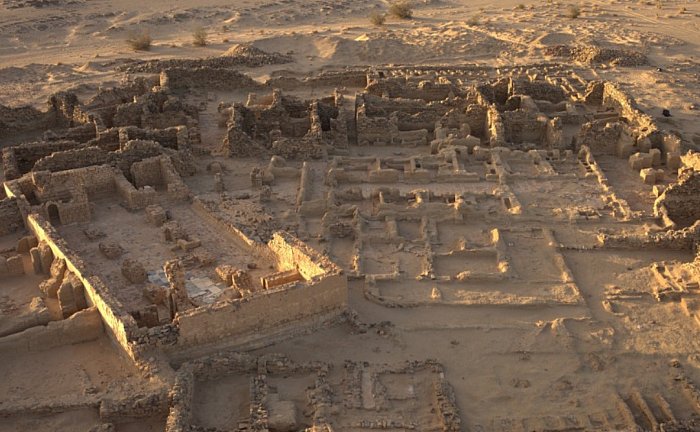Conny Waters – AncientPages.com – A rare medieval religious tattoo was unearthed in a burial in Ghazali, Sudan by a team of researchers from the Polish Centre of Mediterranean Archaeology, University of Warsaw (PCMA UW).
 source
source
The discovery is particularly interesting because it is only the second time the practice of tattooing has been evidenced in medieval Nubia, researchers say.
The discovered ancient tattoo in Sudan is related to Jesus Christ. During pH๏τo documentation in connection with doctoral research being conducted in the PCMA UW bioarchaeology lab, Kari A. Guilbault of Purdue University serendipitously identified what has been confirmed as a tattoo on the right foot of one of the individuals interred in Cemetery 1 at Ghazali.

Images of tattoo on the dorsal (top) side of the right foot. Picture was taken with a full spectrum camera and digital enhanced using ImageJ software with a DStretch plugin. (PH๏τo: Kari A. Guilbault)
The tattoo depicts a Christogram and the Greek letters, “alpha” and “omega”. A Christogram is a religious symbol combining the Greek letters “chi” and “rho” to form a monogram abbreviation for the name of Christ.
The letters “alpha” and “omega,” the first and the last letter of the Greek alphabet, stand for the Christian belief that god is the beginning and the end of everything.
– It was quite a surprise to all of a sudden see what appeared to be a tattoo when I was working with the Ghazali collection.
At first, I was not certain, but when the images were processed and the tattoo was clearly visible, any initial uncertainties were removed, said Kari A. Guilbault in a press release.
The medieval monastic site of Ghazali is one of the best-preserved archaeological sites in Sudan. Located in the Wadi Abu Dom region of the Bayuda desert, in the northern province of Sudan, about 20 km from the modern town of Karima.

Ruins of Ghazali. The archaeological site of Ghazali lies in northern Sudan, about 20 km from the modern town of Karima. The research focuses on the medieval Christian monastery (7th–13th century), founded probably by king Merkurios, and on the remains of a small village, cemeteries, and iron-smelting sites ᴀssociated with it. Concurrently, the team works on preparing the site for visitors. source.
Between 2012 and 2018, a Polish-Sudanese team from the PCMA UW headed by Prof. Artur Obłuski investigated a medieval (7th–13th century) Christian monastery at the site as well as four cemeteries within which hundreds of graves are present. The human remains are currently being studied by bioarchaeologist Dr. Robert J. Stark of the PCMA UW and his colleagues, who are investigating the provenance of the local population and are seeking to learn what life was like for the people who were buried there.
Documentation of this tattoo from Ghazali brings forth numerous questions about the practice of tattooing and signs of faith in medieval Nubia.
The archaeological site of Ghazali is located in northern Sudan, about 20 km from the modern town of Karima. The research work focuses on the medieval Christian monastery (7th–13th century), founded probably by king Merkurios who was a ruler of the Nubian kingdom of Makuria between 697 – c. 722.
The team also investigates the remains of a small village, cemeteries, and iron-smelting sites ᴀssociated with it.
Written by Conny Waters – AncientPages.com Staff Writer





